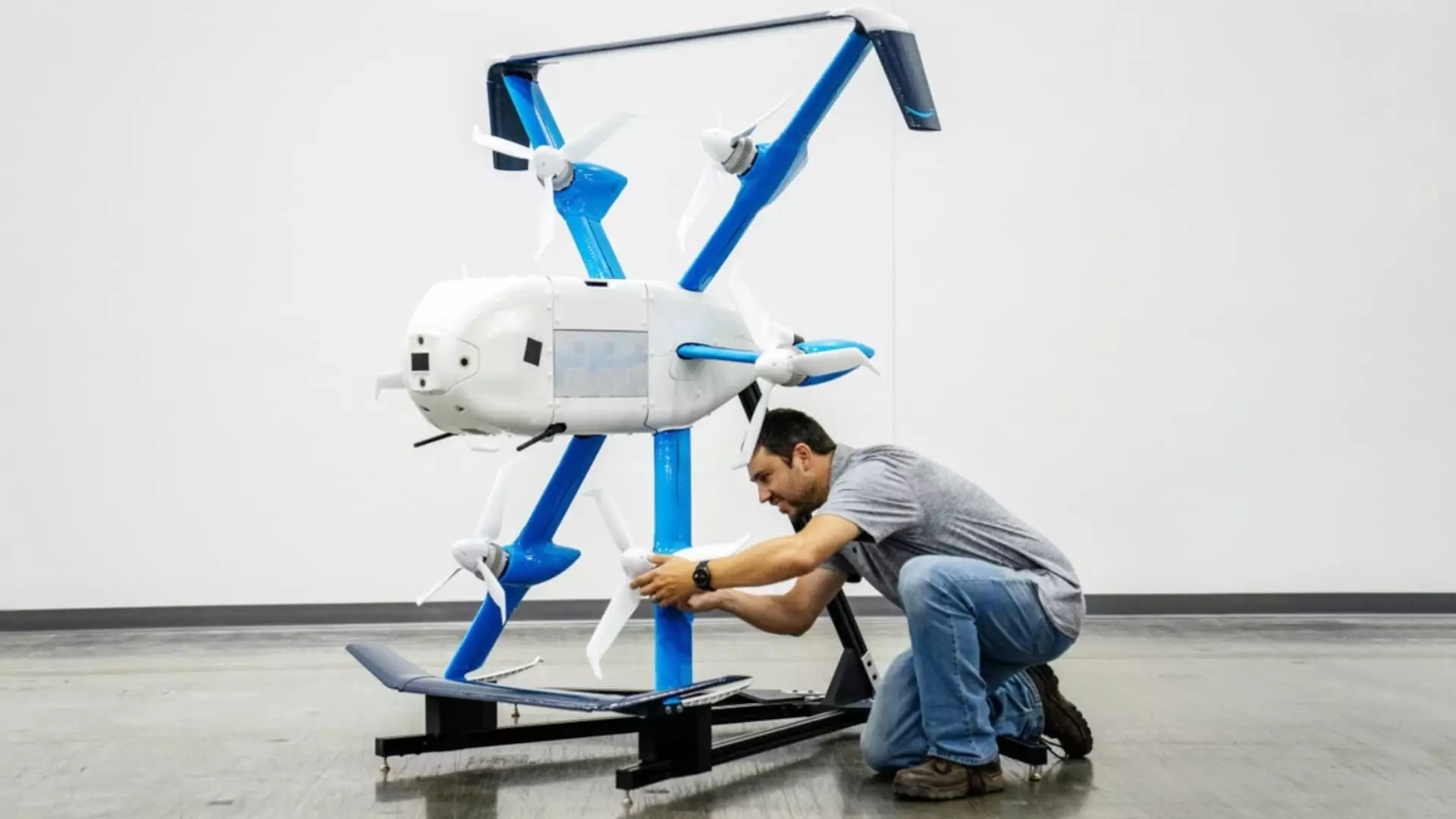On a promising note, Amazon has recently attained regulatory approval for the MK30, a new and improved version of its delivery drone. This development marks a significant milestone in the company’s ongoing endeavor to establish a state-of-the-art drone delivery service as part of its Prime Air initiative. Originally unveiled in late 2022, the MK30 is designed to navigate light rain and boasts an impressive range—twice that of its predecessors. This technological leap aims to enhance the reliability and efficiency of drone deliveries, which have been long-awaited by consumers eager for rapid delivery solutions.
The approval from the Federal Aviation Administration (FAA) is not just a rubber stamp; it represents the culmination of years of development, investment, and regulatory navigation. The FAA’s endorsement allows Amazon to pilot the MK30 over extended distances and beyond visual line of sight—a critical capability for scalable drone operations. However, while this approval is a boon for Amazon, it comes on the heels of previous setbacks, including a more limited waiver granted in May for operations only in College Station, Texas.
Mixed signals from regulators underscore the challenges Amazon faces in its ambitious pursuit. Complicated regulatory frameworks, safety concerns, and public apprehension about drone technology pose formidable barriers that the tech giant must maneuver. This landscape of cautious optimism reflects the broader struggle across the industry, where safety and innovation must strike a delicate balance.
Starting its drone operations in Tolleson, Arizona, Amazon is making strides to integrate these drones more closely with its existing logistics infrastructure. Situated near one of its warehouses, this strategy is aimed at optimizing last-mile delivery times, a critical challenge for Amazon as consumer expectations continue to rise. The announcement of the launch comes after the cessation of testing in Lockeford, California, suggesting a strategic pivot to more favorable environments.
This new operational site is not merely a win for Amazon; it encapsulates a larger vision of enhanced delivery efficiency that has been the core tenet of the Prime Air initiative. This integration into the core logistics network could potentially lead to a paradigm shift in how consumers perceive delivery timelines, making same-day and even instant deliveries a conceivable reality.
Despite the promising developments, it is essential to examine the relatively slow progress of the Prime Air initiative. Launched with great fanfare over a decade ago by Amazon founder Jeff Bezos, the program has had its share of turbulence. Several factors, including regulatory delays, missed targets, and significant layoffs in the face of cost-cutting measures, have hindered its advance. The loss of key personnel, particularly the primary liaison with the FAA and the operation’s founding leader, points to deeper challenges within Amazon’s organizational structure and commitment to seeing the project through.
David Carbon, a former Boeing executive, has since taken the helm, but it remains to be seen whether he can navigate these complexities, reinvigorating the program and restoring stakeholders’ faith in its viability.
Community feedback has further complicated Amazon’s drone ambitions. Reports of noise complaints in cities like College Station reveal a clash between technological innovation and residential tranquility. The local government’s involvement is a reminder that corporate initiatives must also consider citizen concerns if they wish to succeed. Promises made by Amazon to locate a new delivery site by October 2025 suggest that the company is willing to engage and adapt; however, such adjustments must be genuine approaches to community integration.
In the midst of these challenges, Amazon isn’t flying solo. A range of competitors, including Wing (a subsidiary of Alphabet), UPS, and Walmart, have also entered the drone delivery arena. Startups such as Zipline and Matternet further complicate the landscape, intensifying competition in developing drone technologies and services. As major players scramble to establish dominance in this budding market, Amazon must not only overcome its internal obstacles but also carve out a unique niche amid mounting competition.
While Amazon’s drone delivery program is on the brink of potential, it is an undertaking fraught with complications. The integration of the MK30 into its logistics framework presents opportunities, but also reminds us of the careful consideration needed to navigate regulatory landscapes, community relations, and competitive pressures in a rapidly evolving technological ecosystem.

